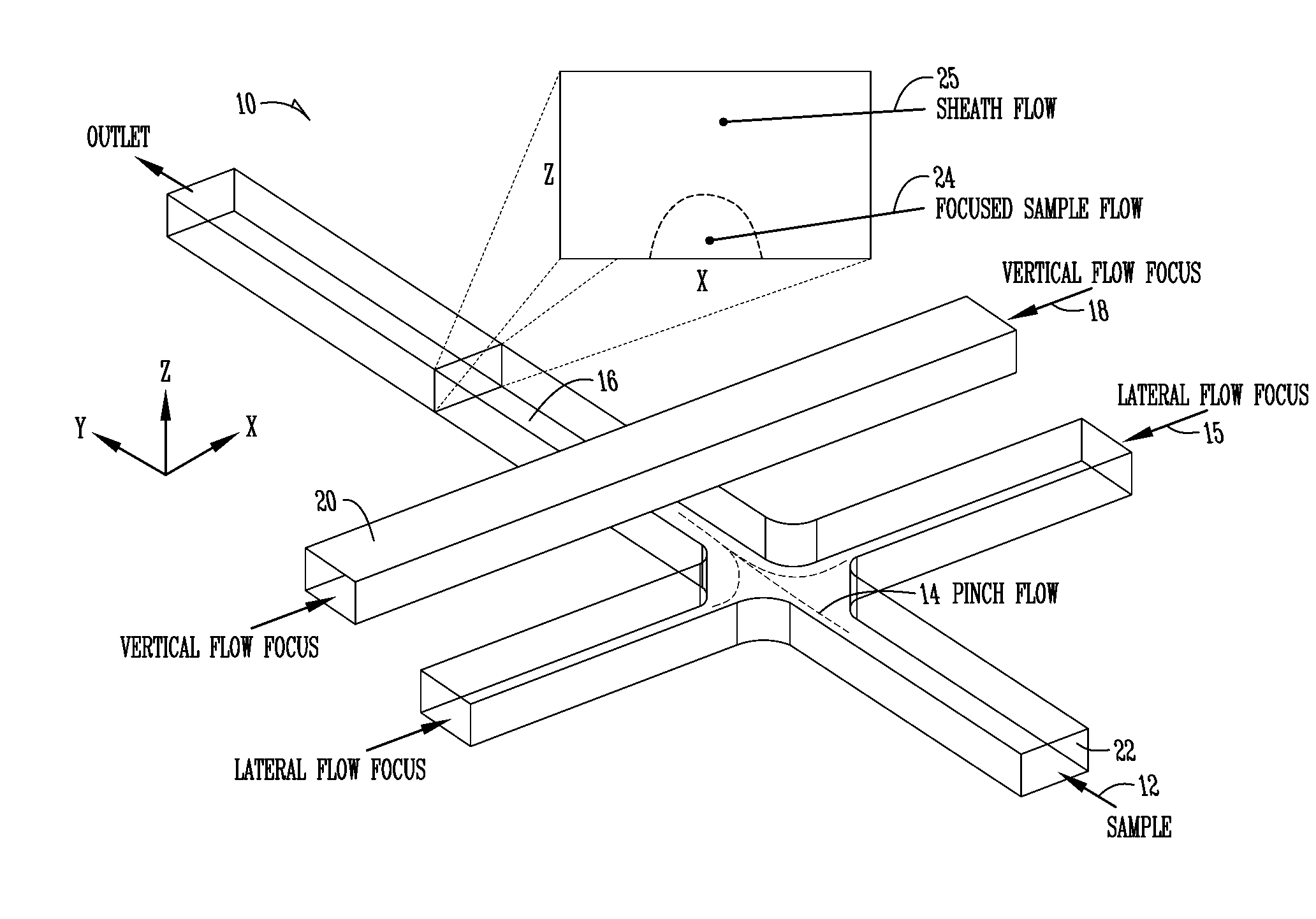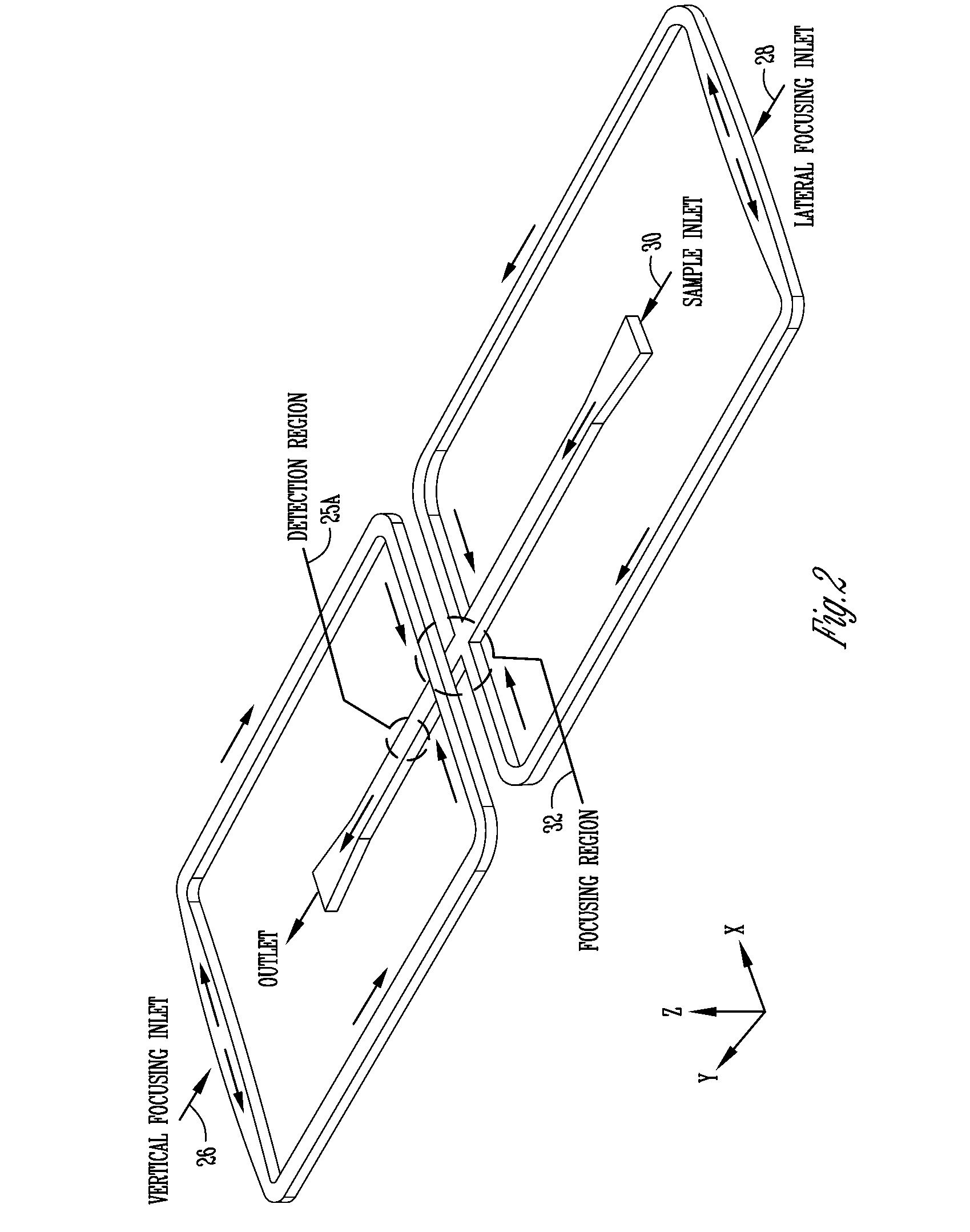Using asymmetrical flow focusing to detect and enumerate magnetic particles in microscale flow systems with embedded magnetic-field sensors
- Summary
- Abstract
- Description
- Claims
- Application Information
AI Technical Summary
Benefits of technology
Problems solved by technology
Method used
Image
Examples
example
Detection of Magnetotactic Bacteria
[0029]Cells of marine magnetotactic vibrio MV-1 were cultured and then fixed overnight at 4° C. in 0.1% glutaraldehyde. The cells were washed three times, resuspended in Tris-borate buffer (pH 8.0), and subsequently stained by adding the Syto 16 fluorescent dye (1 mM solution in dimethylsulfoxide) to a final dye concentration of 2 μm. Fluorescent staining enabled determination of the cell counts using a hemocytometer and a microscope with a 40× objective lens, and the suspension was diluted with Tris-borate buffer to a final concentration of 30 000 cells / μL. The labeled cells appeared well dispersed, with no noticeable aggregates. Three syringe pumps were used to deliver the sample suspension and the two focusing streams (Tris buffer) to the chip. The device was based on the y-direction flow layout (perpendicular to the field), and featured bridges with a single sense and three reference 2×2 μm sensors. Only one of the four bridges was functioning ...
PUM
| Property | Measurement | Unit |
|---|---|---|
| Fraction | aaaaa | aaaaa |
| Flow rate | aaaaa | aaaaa |
| Concentration | aaaaa | aaaaa |
Abstract
Description
Claims
Application Information
 Login to View More
Login to View More - R&D
- Intellectual Property
- Life Sciences
- Materials
- Tech Scout
- Unparalleled Data Quality
- Higher Quality Content
- 60% Fewer Hallucinations
Browse by: Latest US Patents, China's latest patents, Technical Efficacy Thesaurus, Application Domain, Technology Topic, Popular Technical Reports.
© 2025 PatSnap. All rights reserved.Legal|Privacy policy|Modern Slavery Act Transparency Statement|Sitemap|About US| Contact US: help@patsnap.com



